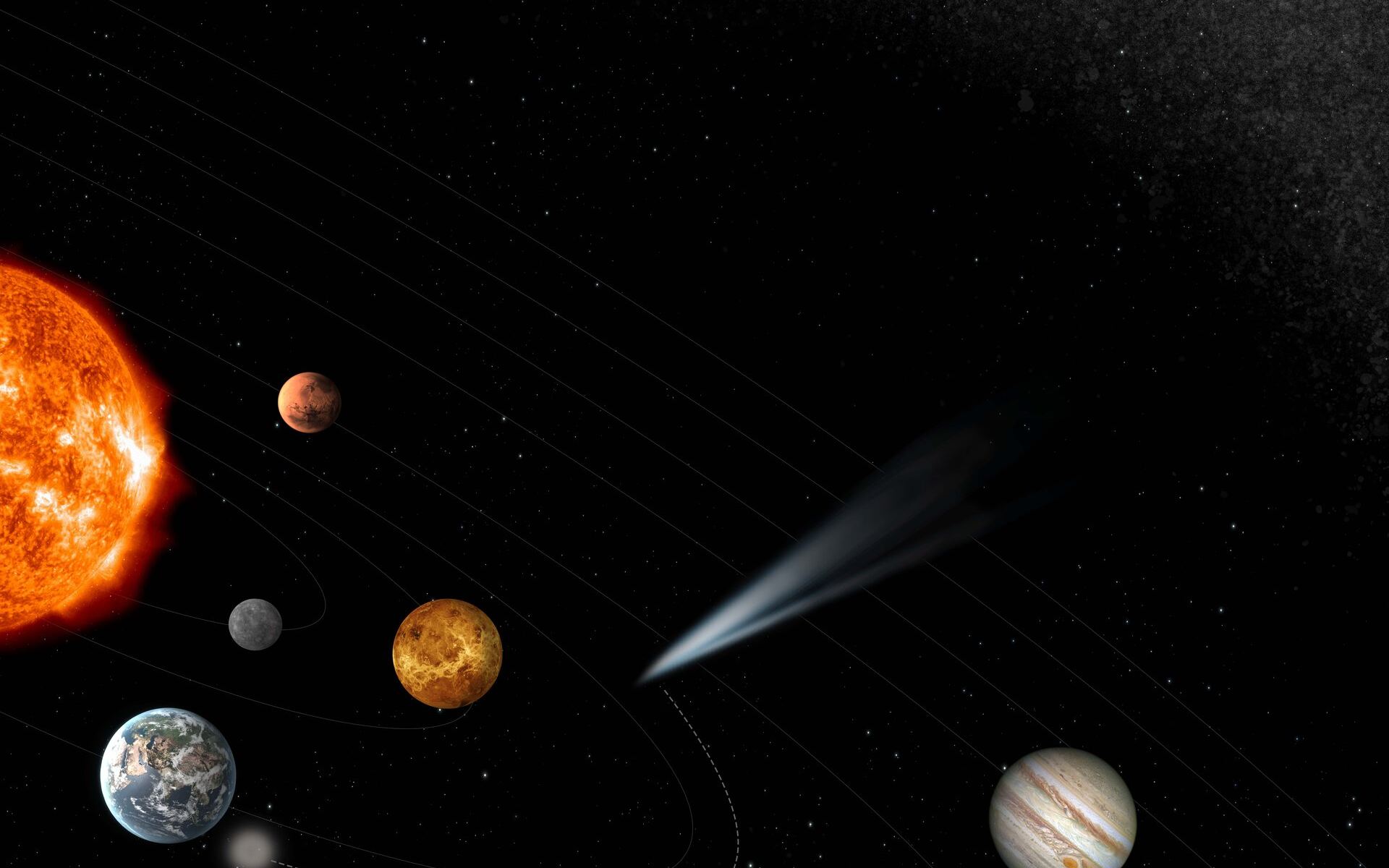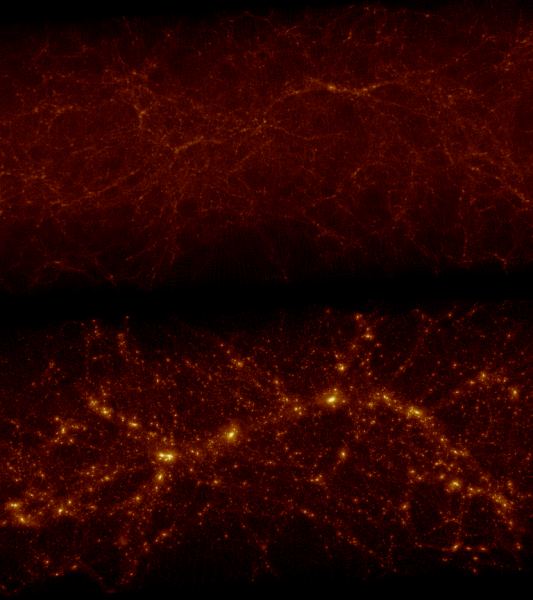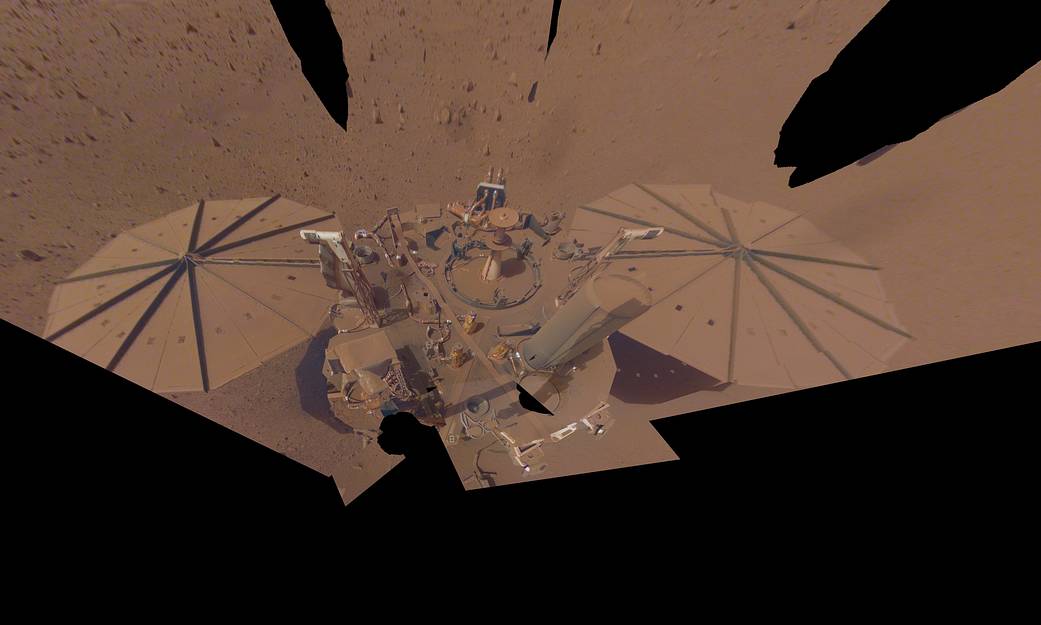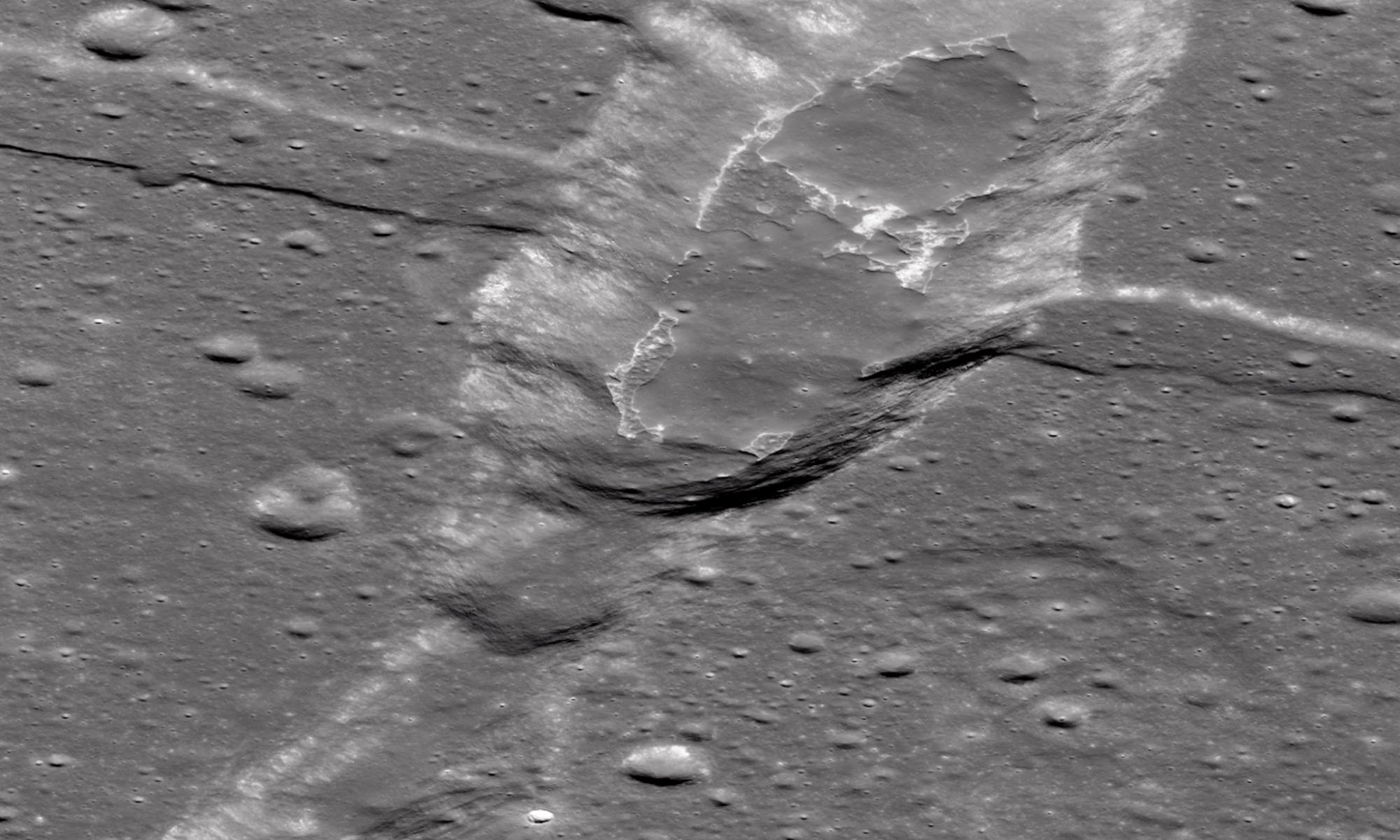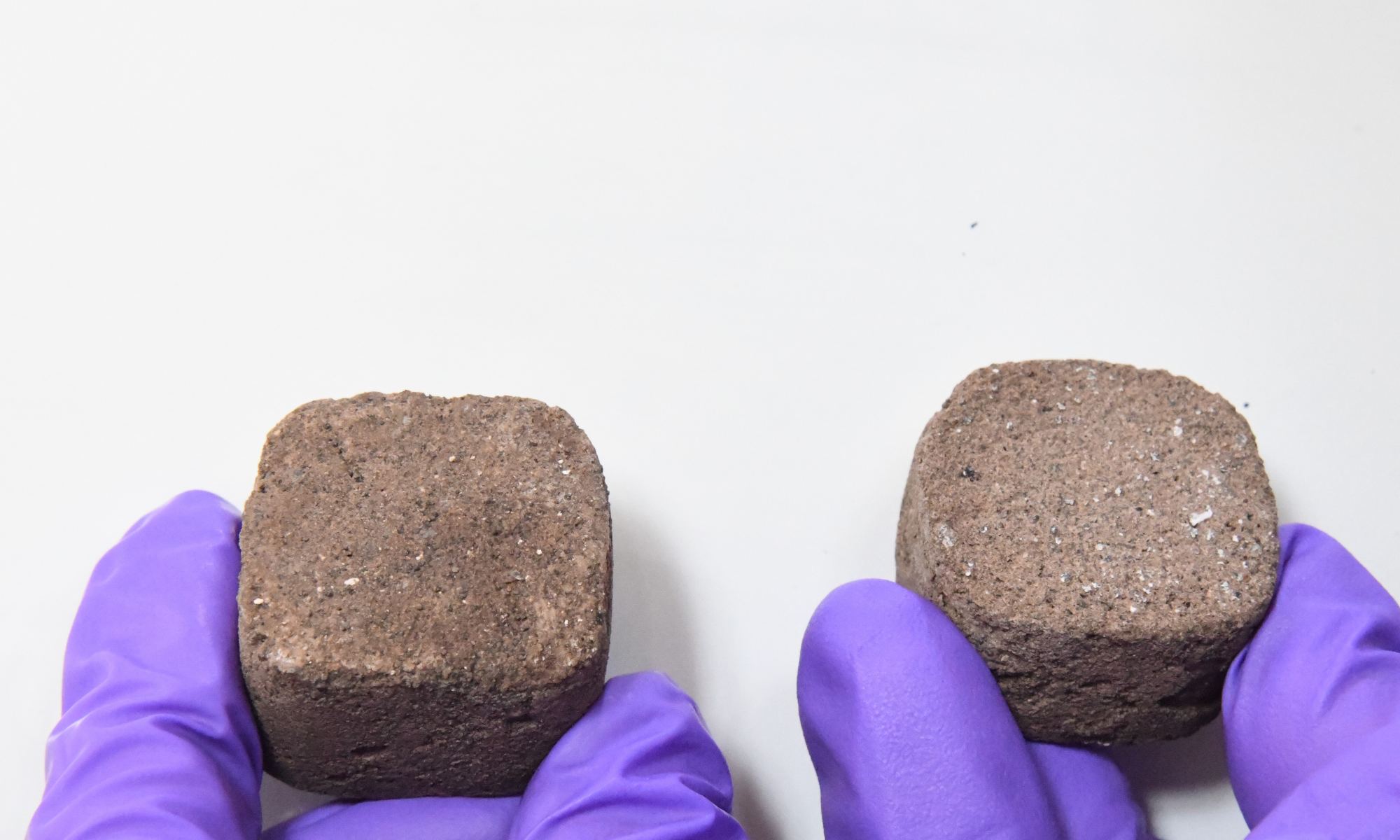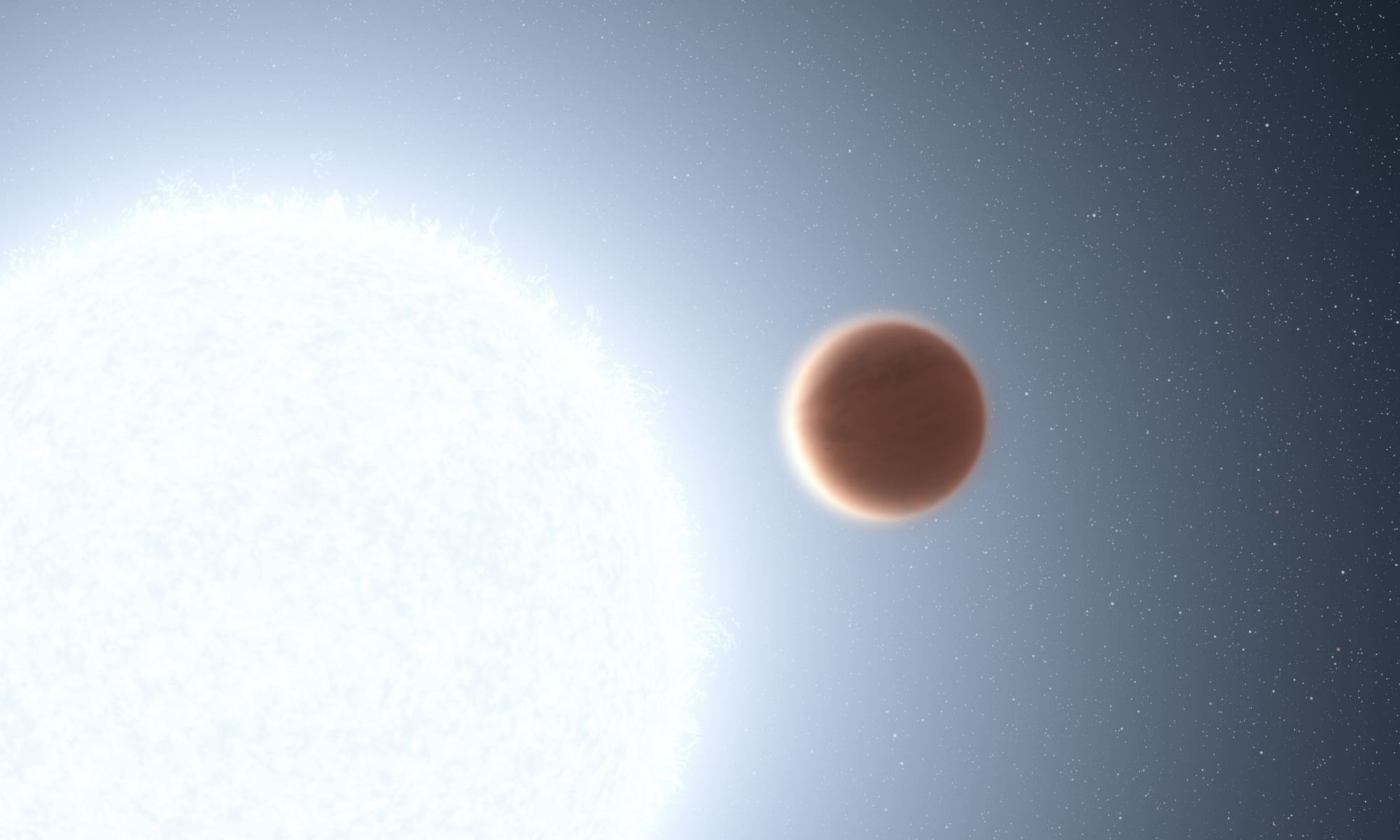Comets, with their long, beautiful, bright tails of ice, are some of the most spectacular sightings in the night sky. This was most apparent when Comet NEOWISE passed by Earth in the summer of 2020, dazzling viewers from all over the planet while being mainly visible in the northern hemisphere. Even though the sky might look the same night after night, comets are a humble reminder that the universe is a very active and beautiful place.
Continue reading “ESA Gives Green Light on its Comet Interceptor Mission”These Galaxies are Definitely Living in a Simulation
Studying the universe is hard. Really hard. Like insanely, ridiculously hard. Think of the hardest thing you’ve ever done in your life, because studying the universe is quite literally exponentially way harder than whatever you came up with. Studying the universe is hard for two reasons: space and time. When we look at an object in the night sky, we’re looking back in time, as it has taken a finite amount of time for the light from that object to reach your eyes. The star Sirius is one of the brightest objects in the night sky and is located approximately 8.6 light-years from Earth. This means that when you look at it, you’re seeing what it looked like 8.6 years ago, as the speed of light is finite at 186,000 miles per second and a light year is the time it takes for light to travel in one year. Now think of something way farther away than Sirius, like the Big Bang, which supposedly took place 13.8 billion years ago. This means when scientists study the Big Bang, they’re attempting to look back in time 13.8 billion years. Even with all our advanced scientific instruments, it’s extremely hard to look back that far in time. It’s so hard that the Hubble Space Telescope has been in space since 1990 and just recently spotted the most distant single star ever detected in outer space at 12.9 billion light-years away. That’s 30 years of scanning the heavens, which is a testament to the vastness of the universe, and hence why studying the universe is hard. Because studying the universe is so hard, scientists often turn to computer simulations, or models, to help speed up the science aspect and ultimately give us a better understanding of how the universe works without waiting 30 years for the next big discovery.
Continue reading “These Galaxies are Definitely Living in a Simulation”This is the Last Selfie InSight Will Ever Take
Few things in life captivate us more than looking at images from other planets, no matter how dull these images might seem. This is especially true for Mars, as it’s where we’ve sent the most robots to explore its cold and dry surface. The very first image from the surface of Mars in July 1976 was nothing more than the Viking 1 lander’s footpad and some rocks, but no one cared about these mundane details because we were looking at an image from Mars. We were looking at the surface of another world for the first time in human history, and not only were we captivated by it, but we wanted more.
Continue reading “This is the Last Selfie InSight Will Ever Take”The Moon’s Ancient Volcanoes Could Have Created Ice Sheets Dozens of Meters Thick
Everyone loves looking at the Moon, especially through a telescope. To see those dark and light patches scattered across its surface brings about a sense of awe and wonder to anyone who looks up at the night sky. While our Moon might be geologically dead today, it was much more active billions of years ago when it first formed as hot lava blanketed hundreds of thousands of square kilometers of the Moon’s surface in hot lava. These lava flows are responsible for the dark patches we see when we look at the Moon, which are called mare, translated as “seas”, and are remnants of a far more active past.
In a recent study published in The Planetary Science Journal, research from University of Colorado Boulder (CU Boulder) suggests that volcanoes active billions of years ago may have left another lasting impact on the lunar surface: sheets of ice that dot the Moon’s poles and, in some places, could measure dozens or even hundreds of meters (or feet) thick.
Continue reading “The Moon’s Ancient Volcanoes Could Have Created Ice Sheets Dozens of Meters Thick”Plants can grow in lunar regolith, but they’re not happy about it
NASA is sending astronauts back to the Moon by the end of this decade, and hope to send humans to Mars sometime in the 2030s. Growing food in space using in-situ resources is vital if astronauts are to survive on both the Moon and Mars for the long-term. Growing plants in space using Earth soil is nothing new, as this research is currently ongoing onboard the International Space Station (ISS). But recent research carried out on Earth has taken crucial steps in being able to grow food in space using extraterrestrial material that we took from the Moon over 50 years ago.
Continue reading “Plants can grow in lunar regolith, but they’re not happy about it”What’s the Right Depth to Search for Life on Icy Worlds?
Are we alone? Is there life beyond Earth? These are the questions that plague the very essence of science, and in particular, planetary science. Unfortunately, robotic exploration of exoplanetary systems currently remains out of reach due to the literal astronomical distances to get there. For context, our nearest star, Proxima Centauri, is 4.25 light years away, or a mind-blowing 40,208,000,000,000 km (25,000,000,000,000 miles) from Earth. Finding an intelligent civilization might be out of reach for now but searching for any forms of life beyond Earth is very much possible within the confines of our own solar system.
Continue reading “What’s the Right Depth to Search for Life on Icy Worlds?”Crew-4 is off to the Station
Name someone who at some point in their life didn’t want to be an astronaut. The answer is no one. Ask any kid what they want to be when they grow up and they all say an astronaut. Being an astronaut is the ultimate dream job for everyone of all ages. Why? Because you get to go to space, and there’s nothing cooler than going into space. For context, even if you’re not a sports fan you have watched the Super Bowl at least once in your life. It is one of the most watched and most lauded sports championship games in the entire world, and yet despite all its media attention and halftime shows and all-time great finishes, the Super Bowl still holds a candle to being able to go to space. Eat your heart out, Tom Brady. Going into space is just awesome, and there’s nothing like it.
Continue reading “Crew-4 is off to the Station”Titan is an Alien World, but Surprisingly Familiar
Saturn’s largest moon, Titan, is a fascinating and mysterious world, a world literally shrouded in mystery due to thick clouds that cameras imaging in the visible spectrum cannot penetrate. This was made apparent when NASA’s Pioneer 11 became the first spacecraft to fly past Titan in 1979, and then NASA’s Voyager 1 and 2 in 1980 and 1981, respectively. All three spacecraft were equipped with cameras that were unable to penetrate Titan’s atmosphere of thick clouds, although atmospheric data from Voyager 1 suggested Titan might be the first body, aside from Earth, where liquid might exist on its surface.
Continue reading “Titan is an Alien World, but Surprisingly Familiar”Explorers Could Build Bricks on Mars with Bacteria and Pee
The famous Russian rocket scientist Konstantin Tsiolkovsky once said, “Earth is the cradle of humanity, but one cannot remain in the cradle forever.” Tsiolkovsky is often hailed as one of the fathers of rocketry and cosmonautics and remembered for believing in the dominance of humanity throughout space, also known as anthropocosmism. His work in the late-19th and early-20th centuries helped shape space exploration several decades before humanity first walked on the Moon.
Continue reading “Explorers Could Build Bricks on Mars with Bacteria and Pee”Hubble Checks the Weather on Hot Jupiters. Forecast: 100% Chance of Hellish Conditions
While the Hubble Space Telescope celebrates 32 years in orbit, like a fine wine, it has only gotten better with age as it continues to study the Universe and teach us more about our place in the cosmos. Hubble doesn’t just take breathtaking images of our Universe, but it also studies our own solar system, galaxies, and exoplanets, as well. It is this last subject where Hubble has recently been hard at work, though.
Continue reading “Hubble Checks the Weather on Hot Jupiters. Forecast: 100% Chance of Hellish Conditions”
